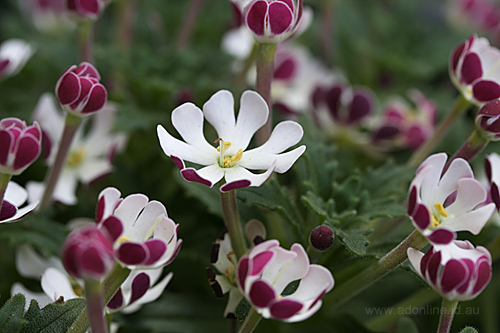Circadian Rhythms
Some plants know when to flower through the use of an “internal clock”, called a circadian rhythm.
Circadian rhythms are based on an endogenous oscillator which keeps time even when there is no light to indicate when its day. This has been recorded by plant scientists who have observed circadian rhythms continuing for several days when plants have been placed in an environment of continuous darkness or dim light. Such experiments indicate that the circadian rhythms are not direct responses to the presence or absence of daylight.
Circadian rhythmic control over flower opening (anthesis) can be clearly seen in plants such as Convolvulus cneorum which has flowers which open in the day and close at night or Zaluzianskya ovata which opens at night and closes at day. Sometimes, anthesis can differ between species of the same genus such as is seen in daylily (Hemerocallis fulva) and nightlily (Hemerocallis citrina).

There are many more processes which are controlled by circadian rhythms aside from floral induction. Some related processes, such as the composition of scent molecules in the night-pollinated Dianthus inoxianus are also controlled by circadian rythms.
The period is an important measurement for a plant because it is the duration of one cycle of the rhythm.
The usual period for plants is 24 hours, but this can be altered if the plant is moved into another artificial environment whereupon it can be reset. For example, if a plant is moved into a controlled growth cabinet where the photoperiod (light period) is 20 hours and dark period is 8 hours (bringing the period to 28 hours), the endogenous oscillator period will adjust to also have a period of 28 hours.
Sometimes a plant will revert to a period of its own choosing when grown in continuous darkness. In 2002, the ELF4 (Early Flowering 4) gene was discovered to have a role in maintaining circadian rhythms in Arabidopsis thaliana. Plants grown in continuous light or darkness with an inactivated ELF4 gene did not maintain their circadian rhythms, while those which had the gene intact maintained their rhythm.
Markers called zeitgebers are essential for regulating the period. These are the "changeovers" from dark to light at dawn and vice versa at dusk. If these are removed and the plant is grown in constant darkness, the period may change from 24 hours to, say, 27 hours. During such an instance, the endogenous oscillator is said to be free-running - there are no zeitgebers to regulate the period and so the period is altered to one that the species "prefers". In this situation the "clock" maintains its time (27 hours) but the physiological effects associated with this (for example the opening and closing of petals) may "damp out" until the plant is returned to normal conditions with zeitgebers.
What has all this got to do with floral initiation?
The circadian rhythm through the endogenous oscillator will cause a response to occur depending on the time of day. Because day length changes throughout the year (owing to the Earth's tilt), the whole cycle must be adjusted to accommodate this.
Hence, if the days are becoming longer, the morning zeitgeber will "reset" the rhythm so it is pushed back (or advanced) to accommodate the earlier sunrise. The period will stay the same (i.e. 24 hours). If the days are becoming shorter, then the rhythm will be delayed. The mechanism which causes the advance or delay in the rhythms is not known.
To describe the different flowering periods of plants which determine their flowering using photoperiod (length of day), the following terminology has been adopted:
- Short day plants (SDPs) will only flower with increasing dark (night) periods.
- Long day plants (LDPs) will only flower with decreasing dark periods.
We know how plants can measure what time of day it is through circadian rhythms (and the zeitgebers), but how can it tell how long the days are?
There is a mechanism called the phytochrome system which records day length so that plants which rely on photoperiodism (day length) to flower can initiate flowering at the correct time of the year.
The circadian rhythms rely on the phytochrome system to work. And the phytochrome system is responsible for floral initiation in plants which rely on photoperiodism.
Next: Day Length
